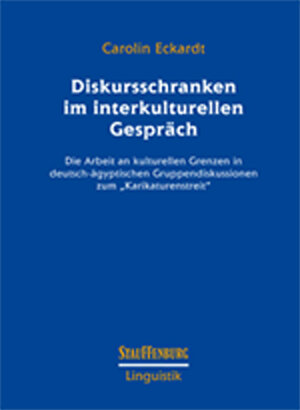
Zielgruppen (Hauptinteressenten):
Zielgruppen (Nebeninteressenten):
Zielgruppen (Nebeninteressenten):
Diskursschranken im interkulturellen Gespräch
Die Arbeit an kulturellen Grenzen in deutsch-ägyptischen Gruppendiskussionen zum "Karikaturenstreit"
von Carolin EckardtYoung German and Egyptian adults discuss about the Muhammad cartoons controversy. Their aim is a consensual intercultural dialog. This study is concerned with the way their conversation unfolds: How do the participants work on cultural borders in such intercultural meetings? What are the consequences for their communication? In how far, e. g., can reductionist dichotomies be resolved, as they are often found in public debates about the relation between 'the western' and 'the islamic' world? The basis is a linguistic critical discourse analysis of group discussions (in German) with surprising outcome: Despite their evident efforts for a consensual dialog, the participants frequently get caught up in a discourse governed by intercultural competition, which makes a factual debate difficult. Using qualitative sequential analyses, this study investigates both why this happens and how the
participants are able to resolve such discursive barriers again. In contrast to what might be expected, strategies that are based on linguistic courtesy and face-work are rather counterproductive. However, where jokes are shared, barriers disappear. This study belongs to the Oldenburg school of critical discourse analysis. It is characterized by a combination of knowledge-based and interactional analytical perspectives: In the research context of critical discourse analysis, the interplay between semantic-epistemic and pragmatic patterns is both established theoretically and shown empirically.





